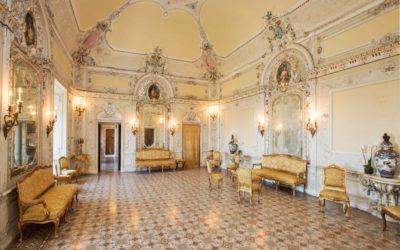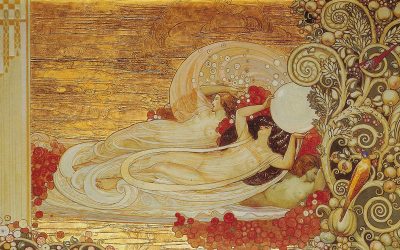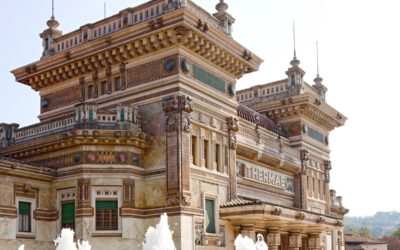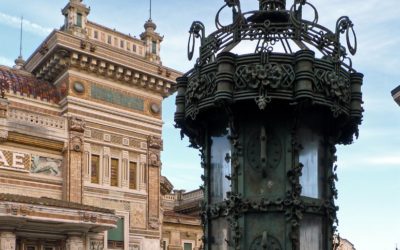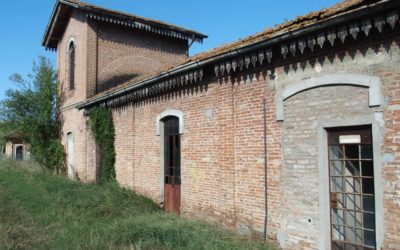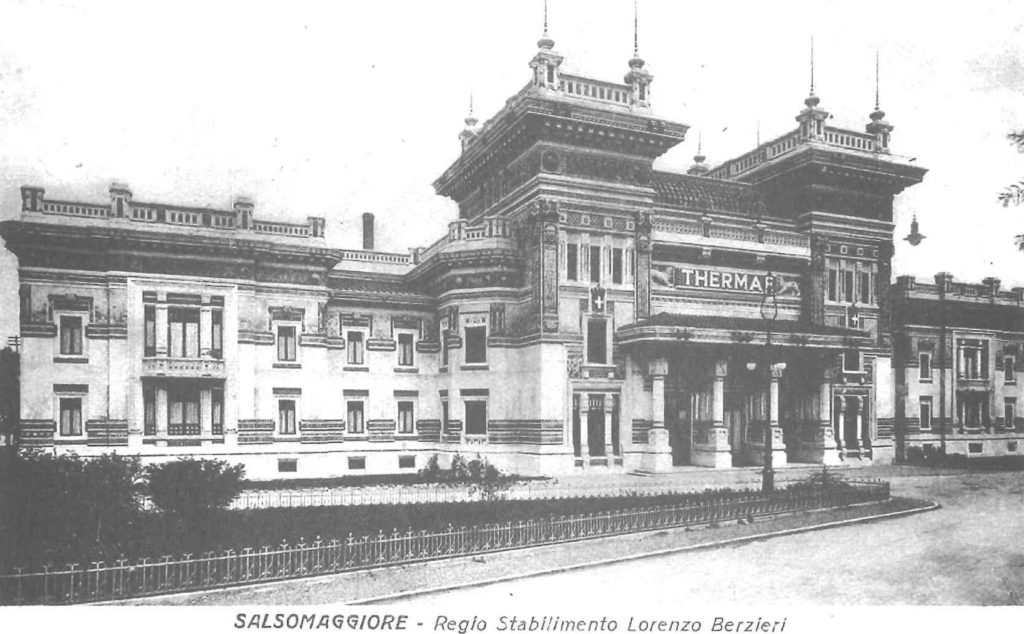
Just under a million years ago, the ancient ocean that stretched all the way to the Apennines began to withdraw and the Po plain, formed by alluvial deposits, retained in its subsoil considerable stores of mineral-rich water, with high concentrations of iodine, bromine, sulphur and calcium. For many centuries, Salsomaggiore remained an anonymous village that attracted little attention. It was only dragged out of obscurity by the Galli Celelati tribe of Gauls ( 2nd century B.C.), who settled in the area to exploit one of its most precious resources, salt. Salso Maiore, therefore, as the ancient place name suggests, was a busy mining village where the water that filtered through the subsoil was treated with a prolonged boiling process to obtain a small but precious amount of treasure: salt. After the Gauls came the Romans, whose presence can still be detected in priceless archaeological remains dotted around the hills surrounding the town. A source of great wealth and prestige, salt continued for many years to be the fulcrum around which life in this part of the country revolved.
The subject of local conflicts of interest between Guelphs and Ghibellines, and later of decrees issued by the Sforza dynasty and the King of France Louis XII, it was the focus of particular attention by the Farnese family, who radically overhauled salt production facilities. Indeed, the most detailed maps of the Salsomaggiore production facility date back to the Farnese rule. Some site plans, now housed in the State Archive of Parma, also illustrate the morphology of the village with its numerous wells plus an ingenious system for channelling and conveying the water, rich in sodium chloride and sodium iodide, by means of a sixty-arch aqueduct. Others, meanwhile, illustrate the particular workings of the “pozzo della ruota”, a well from which water was drawn using a treadwheel worked by prisoners.
1731 saw the Bourbons take control of the Duchy of Parma, and this heralded the start of a delicate transition for the economy of Salsomaggiore, as the kingdom began to import sea salt and, consequently, salt production in Salsomaggiore suffered a progressive decline.
It was only in 1839, thanks to the inspired insight of local physician, Lorenzo Berzieri (1806-1888), who used the thermal water to treat a sick child, that the town became established as a renowned thermal spa resort. In later years, Berzieri was appointed medical director of Tabiano Thermal Spa, where he continued to prescribe bathing in the sodium chloride and sodium iodide-rich water that was carried by mules from the salt wells of Salsomaggiore. Studies into the benefits of the waters of Salsomaggiore, begun originally by Berzieri, were continued by doctor Giovanni Valentini (1816-1886), who immediately grasped the importance of his predecessor’s discovery and turned his home into a treatment centre.
In 1847, by virtue of a decree issued by Marie Louise of Austria, the first thermal spa complex was officially opened in the country house of Giovanni Bussandri. A few years later, in 1860, the Thermal Spa named “Stabilimento Vecchio” (Old Complex) was officially opened on the banks of the Citronia torrent, and shortly afterwards the first major hotels were built. Another key figure in the history of Salsomaggiore in those days was the Marquis Guido Dalla Rosa (1822-1882), thanks to whom the town gained another thermal spa complex, referred to as “Stabilimento Nuovo” (New Complex), no trace or living memory of which survives. That same period saw other important changes in the salt mining village: after years of perseverance, in 1893 the engineer Giuseppe Magnaghi finally obtained a mining license, with a royal decree granting him the right to drill new wells. He succeeded in establishing an ultra-modern complex, the Magnaghi Thermal Spa (demolished after the Second World War).
The town enjoyed a boom in development, with new hotels springing up with all the modern conveniences offered by the most luxurious European hotels of the day and attracting an illustrious clientele: the Queen Mother, the Duke of the Abruzzi, the Infante of Spain and the former King Constantine of Greece. Also in those years, the eminent physician Edoardo Porro (1842-1902) spoke about the importance of treatments employing sodium chloride and sodium iodide-rich waters for gynaecological conditions. Advances in thermal spa science, coupled with the brilliant artistic input of architects and decorative artists of international renown and investments by entrepreneurs at the end of the 18th century, helped turn the “salt village” into one of the most celebrated, successful and elegant Villes d’Eaux in all of Europe.
